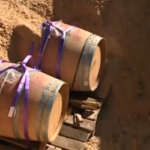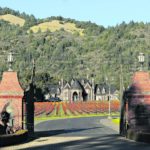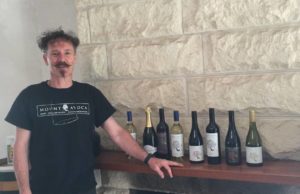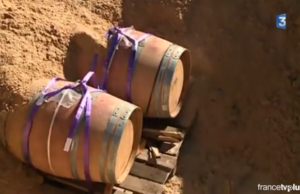Sonoma County Pinot Noirs Blur the Boundary Lines
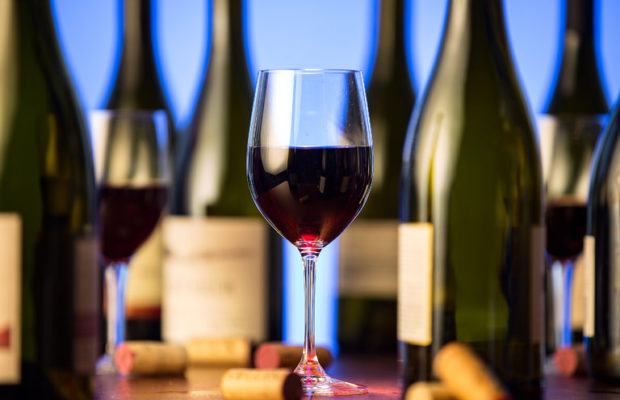
By
It’s a question that comes up regularly: What is your favorite American region for pinot noir? I find it impossible to answer.
No matter the region, so many variables shape the making of a wine that the characteristics of a particular place can often be overwhelmed by grape-growing and winemaking decisions. Generally, my answer is that I don’t have favorite places, just favorite producers.
This, of course, is the sensible answer regardless of the wine you are discussing. Even in Burgundy, where expressing the intricacies of terroir has been raised to a high art, the human element remains the most important thing.
With centuries of vintages behind them, Burgundians can confidently describe the divergent characteristics of, say, Chambolle-Musigny and Nuits-St.-Georges. Differences in bottles may indeed abound within these appellations, but locals often assess the discrepancies by debating which wine most clearly expresses the spirit of Chambolle or Nuits. Or they can be explained away — a Chambolle-Musigny made from a Nuits-St.-Georges point of view, for example.
The same accumulation of history is not available for Americans, where the modern wine era traces back just a scant few decades. Here, the differences in terroir have not been so rigorously codified and agreed upon. A case in point is the Sonoma Coast of California, a region so unwieldy and with so many perspectives on what it is and what it can be that the appellation is all but useless.
It’s not news that this particular American Viticultural Area, as appellations in the United States are formally known, makes little sense except perhaps to the big wine companies that own vineyards in distant parts of it. The all-encompassing boundaries permit these companies to blend grapes grown 75 miles apart, as the car drives, and claim they are making an estate wine, which they could not do if the grapes came from different appellations. At the least, that violates the spirit of the term “estate.”
The big companies were the ones that pushed through the boundaries of the Sonoma Coast region, which stretches along the coast from the southern border of Mendocino County to the northern border of Marin, and juts inland more than 40 miles to the other side of Highway 101. It overlaps areas that are rightly part of other appellations, like the Russian River Valley, Green Valley and Sonoma Valley. Yet grapes grown in those areas can make Sonoma Coast wines, if the producers choose, with the connotation of its wind-swept, fogbound rugged terrain.
Not surprisingly, producers that are actually in the coastal portion of the region have initiated efforts to subdivide their corner of the appellation into more manageable slices, guided by soil and climate characteristics rather than business and political concerns. One such subappellation, Fort Ross-Seaview, already exists, and more may be coming in the next decade or so.
Despite the frustrating vagaries of the appellation, which make choosing wines difficult for consumers, the true Sonoma Coast shows great promise for pinot noir. A wine panel tasting of 20 Sonoma Coast pinot noirs from recent vintages offered ample evidence of the region’s potential rewards and frustrations.
For the tasting, Florence Fabricant and I were joined by Jason Wagner, wine director of the reborn Union Square Cafe, and Christy Frank, who with her husband, Yanai Frank, has two shops, Frankly Wines in TriBeCa and Copake Wine Works in Copake, N.Y.
The 20 wines in the tasting were bought at retail outlets from selections available to the public. Sorry to say, this eliminated some of the best producers on the coast, which make small lots of wine that are either snapped up immediately or are available only by mailing list. This included bottles from Kutch, Failla, Anthill Farms, Hirsch, Cobb, Rivers-Marie and Radio-Coteau.
The wines that were available showed the mixed bag of the region, at a fairly high price despite our usual $100-a-bottle limit. From a retailer’s perspective, Ms. Frank pointed out the difficulties of dealing with the unwieldy region.
“If somebody asks for a Sonoma Coast pinot noir, I’d be hard pressed to hand them a bottle without finding out more,” she said.
For my part, the best wines were bright and precise, with finely delineated aromas and flavors of spicy, earthy red fruits and flowers balanced by brisk freshness and lively acidity. But we also found wines that were muddled, oaky and rustic in an unpleasant way.
These variations were evident partly because of where the grapes were grown. But other variables play into the wines, like the particular sort of pinot noir vine selected by the grape growers, which have different aroma and flavor characteristics that can be particularly meaningful in wines from young vineyards. And the stylistic preferences of the winemakers are crucial.
All this said, many of our top bottles were from the true coast. Our No. 1 wine, the 2014 Ama Estate from Peay Vineyards, came from the northwestern-most part of the appellation, near the town of Annapolis. Its graceful body and spicy, refreshing flavors epitomized what I see as the potential character of wines from that area.
The No. 2 was the 2013 Red Car Heaven & Earth, which came from the Bohemian Station Vineyard near the town of Occidental, to the south and inland of Annapolis. It had a similar set of flavors to the Peay and was notable for its freshness and precision.
Littorai, which made our No. 3 bottle, produces excellent single-vineyard pinot noirs from all over the southern Sonoma Coast, as well as from the Anderson Valley of Mendocino County. Our wine, a blend from several vineyards, showed finesse and juiciness, along with a high-toned citrus note.
Other bottles well worth noting include the stony, earthy 2013 Pahlmeyer Jayson, the second label for Pahlmeyer’s Sonoma Coast pinot noirs, and the silky 2014 Royal St. Robert Cuvée from RAEN, made by two grandsons of Robert Mondavi, who named the cuvée to honor their grandfather. (RAEN is an acronym for Research in Agriculture and Enology Naturally.)
Our No. 6 bottle, the 2014 Williams Selyem Sonoma Coast, was the most expensive bottle in the tasting at $98. It had rich, full-bodied flavors that made me think of the Russian River Valley rather than the Sonoma Coast, but it was well done in this style. By contrast, our No. 7 bottle, the 2015 Clary Ranch from Arnot-Roberts, was a very lean pinot noir. I liked the complexity of this wine and would like to taste it again in a couple of years.
As I suggested earlier, this was an expensive group of wines. Only one of our top 10 was under $49, the straightforward 2015 County Line at $30, No. 8 on our list. Not bad, but not particularly exciting either. None of the wines earned our “best value” citation.
Except for the Pahlmeyer and the 2013 Sun Chase Vineyard from Guarachi, which were 14.5 percent alcohol, all of our other top bottles were under 13.7 percent alcohol. It may not matter to you, but I find it important, as I prefer pinot noirs that display finesse rather than power, and I prefer drinking over meting out sips.
★★★ PEAY VINEYARDS SONOMA COAST AMA ESTATE PINOT NOIR 2014 $59
Lively and graceful, with spicy, refreshing flavors of red fruits, flowers and herbs.
★★★ RED CAR SONOMA COAST HEAVEN & EARTH BOHEMIAN STATION PINOT NOIR 2013 $55
Fresh, bright and precise, with aromas and flavors of red fruits, flowers and earth.
★★½ LITTORAI SONOMA COAST PINOT NOIR 2014 $60
Great finesse and precision, with juicy flavors of flowers, red fruits, herbs and a citrus note.
★★½PAHLMEYER SONOMA COAST JAYSON PINOT NOIR 2013 $54
Stony and earthy, with impeccably balanced flavors of red fruit and flowers.
★★½RAEN SONOMA COAST ROYAL ST. ROBERT CUVÉE PINOT NOIR 2014 $75
Silky texture, with juicy flavors of dark fruits and tobacco.
★★½WILLIAMS SELYEM SONOMA COAST PINOT NOIR 2014 $98
Relatively rich and full-bodied, with crowd-pleasing flavors of dark fruits, chocolate and oak.
★★ ARNOT-ROBERTS SONOMA COAST CLARY RANCH PINOT NOIR 2015 $70
Light-bodied and lean, with lively flavors of red and dark fruits, herbs and earth.
★★ COUNTY LINE SONOMA COAST PINOT NOIR 2015 $30
Straightforward, with bright, balanced flavors of red cherries.
★★ FLOWERS SONOMA COAST PINOT NOIR 2014 $49
Balanced, with reticent flavors of berries and chocolate.
★★ GUARACHI SONOMA COAST SUN CHASE VINEYARD PINOT NOIR 2013 $56
Tannic, a bit rustic and floral, with chewy flavors of red fruits and herbs.
Recipe Pairing: Chicken With Prunes and Chiles
Offer me a fine red Burgundy, and I doubt I would reach for ancho chiles to season an accompanying plate of food. But pinot noirs from the Sonoma Coast of California are a different story. Most are grapy, spicy and fairly straightforward, without the brooding complexity contributed by the soils of the Côte de Nuits. This chicken — bathed in a musky, chile-fueled sauce that’s made to behave by plump, sweet prunes — presents these wines with a sturdy partner. It’s a dish I concocted somewhat on the fly, having decided only on chicken, prunes and smoky cumin before I went shopping. I was delighted with the results. The abundant sauce needs a delivery vehicle beyond the meat. I had potatoes on hand, so I served them mashed. But sweet potatoes, soft polenta, tender white beans or plain steamed rice would all be suitable choices. FLORENCE FABRICANT


